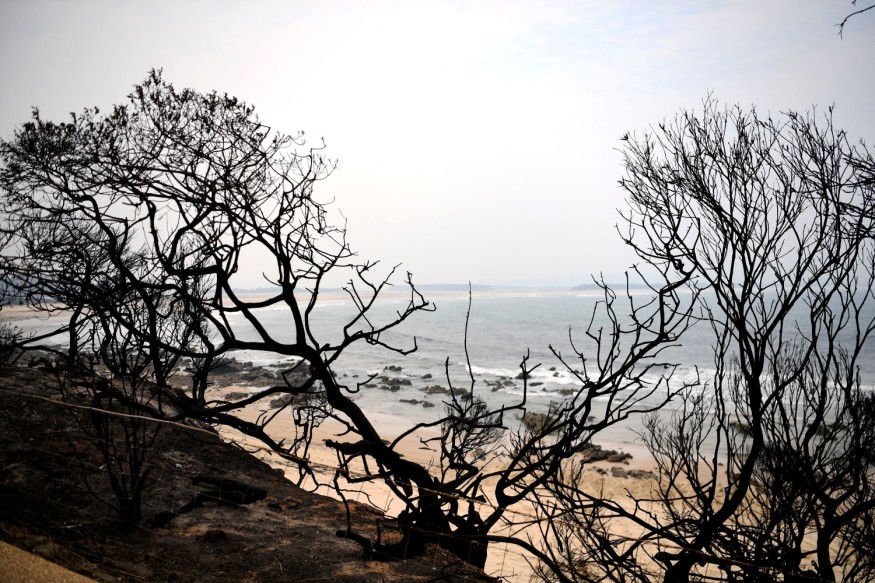
An Australian city has spent the night time cut off through bushfires as volatile weather whips up the giant threat for nearly a week.
Prime Minister Scott Morrison warned Friday could be "a hard day in the eastern states" amid forecasts of heat, strong winds, and dry lightning.
One town on Kangaroo Island in Southern Australia confronted an abrupt risk.
Erratic winds on Thursday amplified a blaze which isolated the island's largest town, Kingscote, from roads.
Some residents spent the night sleeping near the water's edge, but ferry services were predicted to renew on Friday.
In parts of Victoria and New South Wales (NSW), the government urged human beings to depart their homes "to keep away from tragedy."
At least 27 humans have died in bushfires since September, which has destroyed more than 10.3 million hectares nationally.
Mr. Morrison said Australia still has a "long way" to end the disaster.
What was the treatment
More than 100 bushfires are still burning in worst-hit NSW alone, but the chance is anticipated to be as outstanding in Victoria.
The nation's Country Fire Authority issued numerous emergency warnings early on Friday, warning people to evacuate earlier than it has become too dangerous.
Temperatures within the country could reach 40C in some regions inclusive of East Gippsland, which has already seen massive bushfires.
In NSW, the country's Rural Fire Service has warned of "very excessive, excessive and intense fireplace dangers."
Fires within the state have destroyed approximately 1,000 houses since the New Year.
Mr. Morrison stated that ships remained off the coast of NSW geared up to evacuate towns if needed.
The national authorities have allocated AU$1 billion (US$687.4 million) to assist rebuild towns destroyed by bushfires. The investment is similar to the AU$2 billion (US$1.37 billion) budget, including the aid of the federal government.
Firefighters from the US, Canada, and New Zealand are among those who've flown in to assist fatigued crews.
On Thursday, a waterbombing helicopter crashed right into a reservoir inside the Bega Valley Shire location because it was refilling there. The pilot, contracted by using the Rural Fire Service, survived.
The disaster has also taken an exceptionally-sized toll on wildlife. An anticipated 25,000 koalas had been killed whilst flames devastated Kangaroo IIsland'sultimate week.
The Bureau of Meteorology said on Thursday that Australia reached its hottest and driest year on a report in 2019 due to two specific weather phenomena and climate change.
Authorities have warned that the massive fires, spurred by means of high temperatures, wind, and a three-year-drought will persist until there is significant rainfall.
Too late to leave
While leaving before a bush fireplace threatens is always the most secure option, it is not constantly achievable.
"Late evacuation, historically speaking, has been a major reason for bush fireplace fatalities," Joshua Whittaker, a research fellow at the University of Wollongong's Center for Environmental Risk Management of Bushfires, told The Washington Post in an email.
"As such, Australian fire services discourage people from leaving at the last minute when they're much more likely to stumble upon hazards which include flames, fallen trees, thick smoke, and road accidents," Whittaker added.
The dangers of fleeing during a wildfire are well-established and can account for a massive proportion of fire catastrophe fatalities. "We see this everywhere globally," said Crystal Kolden, a professor and fire scientist at the University of Idaho.
The June 2017 Portugal firestorms and the July 2018 fires in Greece were the examples. Many also died in final-minute attempts to outrun the 2003 Cedar Fire, the 2017 Tubbs Fire, and the 2018 Camp Fire in California.
Australia's warning tell humans to search for shelter in a stable condition immediately and to wear sturdy footwear and protective garb made of herbal fibers that won't melt, along with cotton or wool.
© 2025 NatureWorldNews.com All rights reserved. Do not reproduce without permission.




